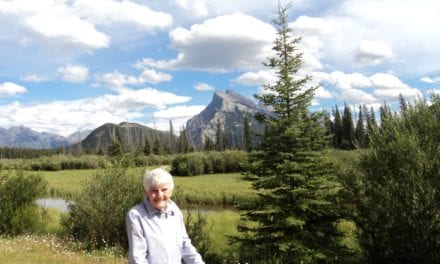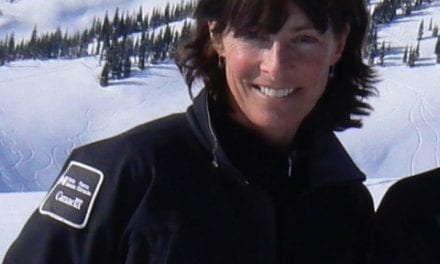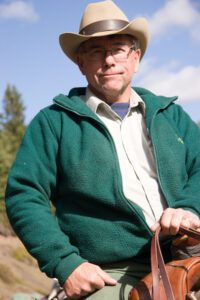
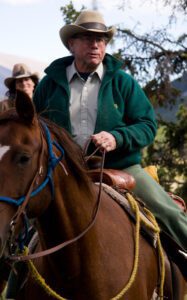
What made the Warden Service such a unique organization?
The people which comprised it, their intense individual and collective dedication to the ideals and operating principles of National Parks, and the practical and effective multi-disciplinary model the Warden Service was historically built upon.
Do you have any lasting memories as a Warden?
I think this interview has been all about my lasting memories of the Warden Service. My favorite Park may be the next one I visit. Favorite cabins are Egypt, Windy, Barrier, Redearth, Dormer, Brazeau, and Little Yoho. My favorite horses have to be Dormer and Chip.
Speaking of horses, I may still have scars I received from a beautiful sleek three year-old bay that I rode on the final day of a 3-day trip while herding the Warden horse herd back to Banff. We were travelling the old Cascade Fire road, from their wintering grounds at the Ya Ha Tinda Ranch. Our final overnight was at Stony Creek. I had drawn kitchen chores, so was the last one out of the cabin. Being closer to Banff, the horses were itching to go. I quickly switched my saddle to the bay from yesterday’s older, and apparently more rotund, horse. Consequently, the stirrups hung a bit lower… However, I didn’t realize this until I was on his back, and it was too late to adjust them. There was no holding the herd back any longer, the bay was crow-hopping, and we were gone in a flash! No more plodding along. The herd began in a quick trot, which rapidly turned into a canter, and by the time we were nearing Bankhead, into a full-blown gallop. It was exciting, but by the time we had stampeded across the Banff airstrip to the barn, there wasn’t much hide left on the inside of my green backcountry jeans. I was walking bow-legged for day afterwards.
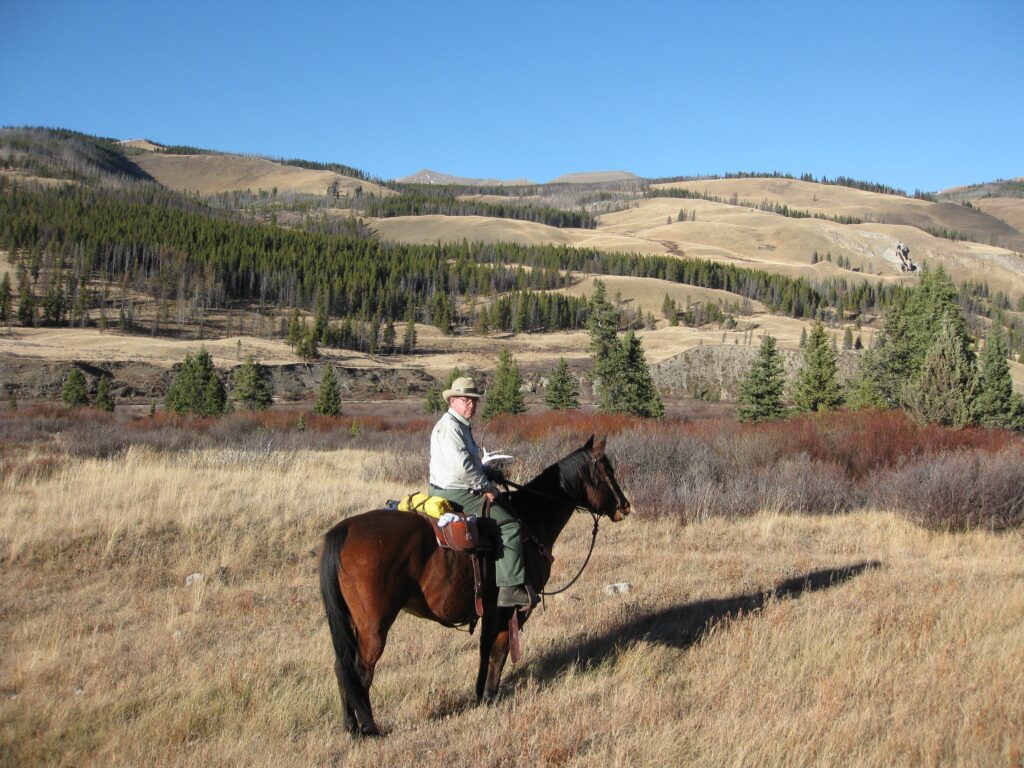
Do you ever miss being a Warden?
Yes, I always will. But at the same time, I am happy feeling lucky to have been able to live and raise our family in the lifestyle made possible by being a National Park Warden, during the times we did. Just a reminder to readers: we can all live vicariously by being a member of the Park Warden Service Alumni Society! One of our initiatives is to get together annually, for an autumn camping mini-reunion to share friendships and stories, and plot new adventures. The next reunion is set for Salmon Arm, September 5-7, 2023.
Do you have any photos of yourself as a Warden that you would like to donate to the Project, or that we may copy? Do you have any artifacts/memorabilia that you would like to donate to the Project (Whyte Museum).
Yes. That is a good future project.
What year did you retire? What do you enjoy doing in retirement?
I retired from Parks Canada in 2012, from my position as the Fire/Vegetation Specialist for Jasper National Park. In retirement, I continued volunteering and doing contract working with the Partners in Protection Association, which has eventually morphed into the nation-wide entity known as “FireSmart Canada”, our national program for reducing the risk of wildland-urban fires to Canadian communities. In 2013, in collaboration with the NFPA/USA Firewise program, I co-created the FireSmart Canada Neighbourhood Recognition Program, and later trained hundreds of fire personnel across Canada how to implement that program, for engaging the public in taking effective risk mitigations.
In 2014, I started a 1-person company (ForestWise Environmental Consulting Ltd.). Up until 2023 I have worked under contract on a series of research and development projects for the Institute for Catastrophic Loss Reduction, the BC Wildfire Service, the City of Fernie, Regional District of East Kootenay, the BC FireSmart Committee, the Standards Council of Canada, Town of Jasper and many others. I also conducted examinations of major Canadian Wildland-Urban fire disasters at Slave Lake and Fort McMurray (AB) and at Kelowna and Lytton (BC). Working with co-authors Steve Taylor (Canadian Forest Service) and Jack Cohen (United States Forest Service) I helped developed prototype methodologies for conducting live research on WU fires, in order to answer outstanding questions about how homes ignite and how fire spreads within communities. These publications have allowed me to keep active in learning and also offered many opportunities to deliver educational presentations. Since 2012 I have also enjoyed working with dozens of communities and neighbourhoods in BC to help them attain FireSmart recognition status.
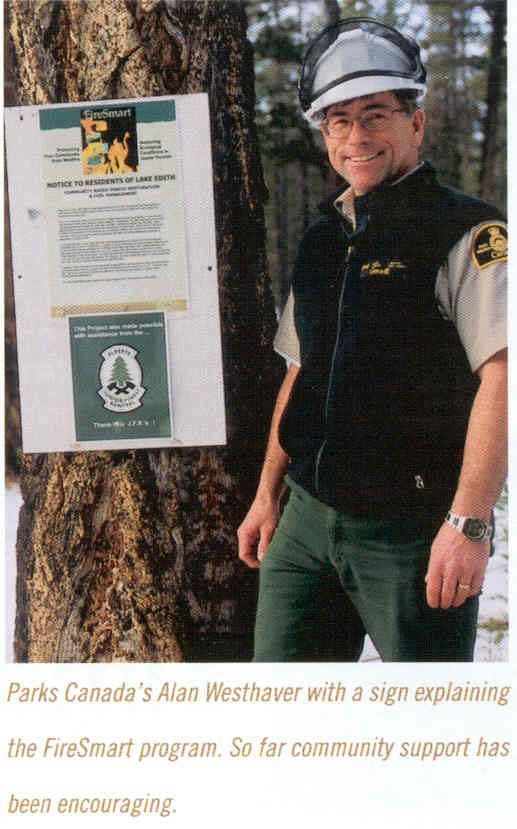
Most importantly, after migrating from Jasper, then Fernie, and finally to Salmon Arm we’re continuing to camp and explore our way across the continent. We’ve also been spending as much time as possible with our wonderful and energetic, but far-flung daughters (Heather, Robin and Theresa). Recently, we have fallen in love with being grandparents to little Aven, daughter of Theresa.
Is there anything else you think should be known about the Warden Service?
Often, Park Wardens of the past were viewed from the outside almost as “action figures”. It’s true, we’re all guilty of being adrenaline junkies to one degree another, always ready to react to the next situation no matter if it’s a fire, search & rescue, a law infraction or an accident.
However, there were/are those among us who also saw great value in documentation, records and the more mundane task of translating experience, knowledge and forethought into complex management plans. That is, the paperwork side of being Warden. The Natural Resources Management Process (NRMP), enlightened park policy and the concept of ecological integrity (developed and promoted by wise people like Nik Lopoukhine and Stephen Woodley, laid out the framework for that. It took a lot of perseverance and discipline to use those tools to create comprehensive Bear Management Plans, Backcountry Management Plans, Vegetation/Fire Management Plans, and Park Conservation Plans at the park level, or for the Four Mountain Parks.
I was one of those who saw the value of writing comprehensive plans as a means of avoiding and solving problems, and improving our ways of actively preserving and restoring functional ecosystems. Given that aptitude, I authored or co-authored many such plans. It has been satisfying to see that some aspects, or excerpts, of those efforts were still surviving on shelves in a number of places more than 20 years after being written.
In 1985, an article in the Forestry Chronical reported that Parks Canada devoted 7 – 8% of its total annual budget and workforce to natural resource conservation. I wonder what those numbers are today, but suspect it is less. That, and the current lack of backcountry presence is lamentable…..leaving the door open to a future generation of Park Wardens who may repeat our experiences.
Is there anyone else I should talk to?
I would recommend Peter Perren (now a Canmore lawyer), Jack Willman (now retired in Lamont,
AB) and Peter Whyte (Cornwall, Ontario).
Editors note: Peter Perren and Peter Whyte have been interviewed. Jack Willman has been invited to be interviewed.
Monique Hunkeler first started working with Parks Canada in 1989 as Secretary to Banff National Park Finance Manager. She moved into a position as Dispatcher for the Banff Park Warden Service and later worked within Banff National Park and Town of Banff’s IT departments. She is experienced with the interviewing, transcription and archiving process the Park Warden Service Alumni Society.
